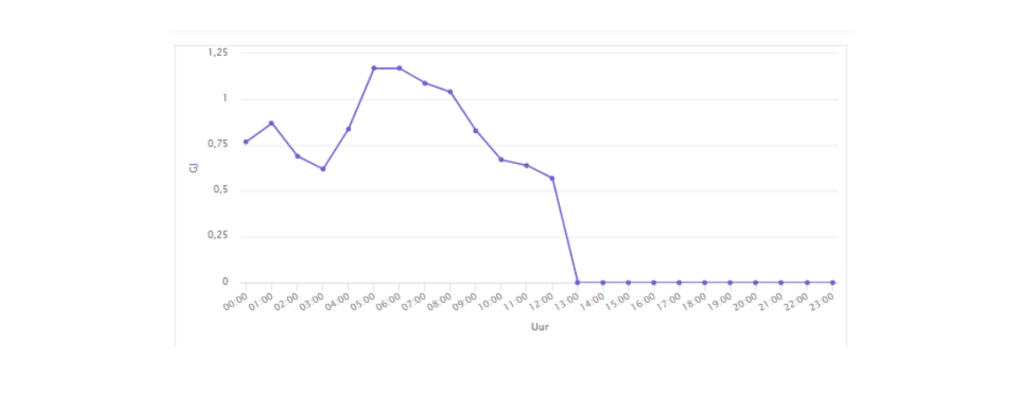
The secrets of energy monitoring
Energy monitoring and energy management are important for achieving the Paris objective

The final objective for making our buildings more sustainable is clear. By 2050, we must have achieved a 95% CO2 saving. As a result, it is also becoming increasingly clear which measures should play an important role in achieving this objective.
Savings are achieved by renewing buildings and installations, but the proper management of these buildings can also make a significant contribution to CO2 reduction. This is also recognised in European and Dutch legislation. For example, energy monitoring is a recognised measure: a measure that will always yield returns for many types of buildings.
Reducing consumption with energy management
Energy monitoring provides insight into and monitors the energy consumption of a building. On this basis, building systems can be adapted to reduce and optimise consumption. This is referred to as energy management. In this article, consultant Youp van der Zande shows how energy monitoring and energy management can deliver major savings and how you can apply it in your organisation.
Savings of 5 to 20% achievable in any building
Now that most buildings are equipped with smart energy meters, the consumption can often be tracked per fifteen minutes or per hour on the main meters. This also makes it possible to carry out energy monitoring and management for virtually any building. The measurement data can be obtained from the measuring company or energy supplier. Various types of software are available to analyse the data. In practice, savings of 5 to 20% of the annual consumption can then be seen. For an office building, it is advisable to start with a check of the following points:
- Do systems run only on days and times when people are actually present?
- Are empty building parts being air-conditioned?
- Are there any special days on which the building stays closed, such as holidays?
- Is it heated only in the seasons you’d expect it to be?
“When your company applies energy management and energy monitoring on a continuing basis, your organisation will automatically comply with the legislation relating to energy efficiency. In addition, experience shows time and again that the hours spent are almost always quickly recouped and therefore the energy costs are reduced in the long term.
– Youp van der Zande, consultant at CFP
Figures from practice

Below you can see the energy consumption of a real-life building. The green line shows that consumption from 3.30 p.m. until 10.30 p.m. was higher than night consumption. Presumably the ventilation and other electronic systems were switched on between those times. As this is an office building that is not used in the evening, the clock times in the building management system could easily be adjusted.
The graph below shows the consumption on the next day in purple. This action already resulted in a saving of 25%! The start-up in the morning seemed at first to be possible at a later time, but inquiries on location revealed that people start work early and that therefore heat from the building often has to be ventilated early by night ventilation. A further adjustment was therefore not necessary.

In-depth analyses result in even less energy consumption
After performing the most obvious checks, a deeper analysis can be made. Examples include benchmarking electricity and gas consumption against other buildings, monitoring the simultaneous use of heating and cooling, the effective heating of a building, submetering for major energy consumers, etc.
Example: office building in practice

The graph below shows the district heating consumption of an office building. Remarkably, this starts very early, around midnight. This can sometimes be necessary on Monday mornings, especially in poorly insulated buildings.
However, there is an early peak in this building, after which the heating decreases. And at 5 a.m., there’s a second start-up peak. This indicates that the building is warm quickly, after which it can be heated less until the heat demand increases again around 5 a.m. In this case it is advisable to experiment with the start-up time. By heating up a few hours later, tens of percentages can be saved.

Apply energy management in your organisation
Energy monitoring and energy management yield the best results when carried out on a long-term basis. It is an ongoing process of checking, adjusting, checking and adjusting again. Below 4 tips for applying energy management in your building:
- Assign responsibility to specific persons, so that energy management is embedded in your organisation.
- Ensure that consumption is checked regularly and that automatic alarms are set off when consumption deviates.
- Discuss the points for improvement with the technical and other managers involved in recurring technical consultations.
- Involve various disciplines in the implementation of the right adjustments.
In addition, do not become fixated on graphs or the settings of the climate control system. Take a look at what actually happens in the building, how it is used and what influence the user has on it.
Finally: don’t forget the users
Involving employees and directing user behaviour is something that is often overlooked, but is just as important. What adjustments can the users make, what are their needs and how can you adjust the building accordingly? These aspects also play an important role in energy management.
If you have any questions about this article or if you would like to exchange ideas about it, contact Youp van der Zande via yvdzande@cfp.nl or use our contact form.



